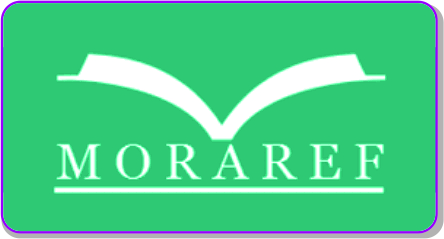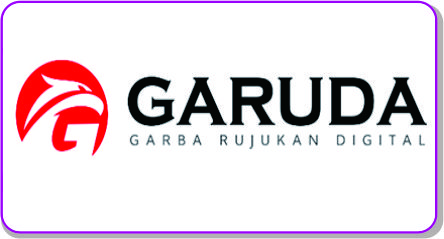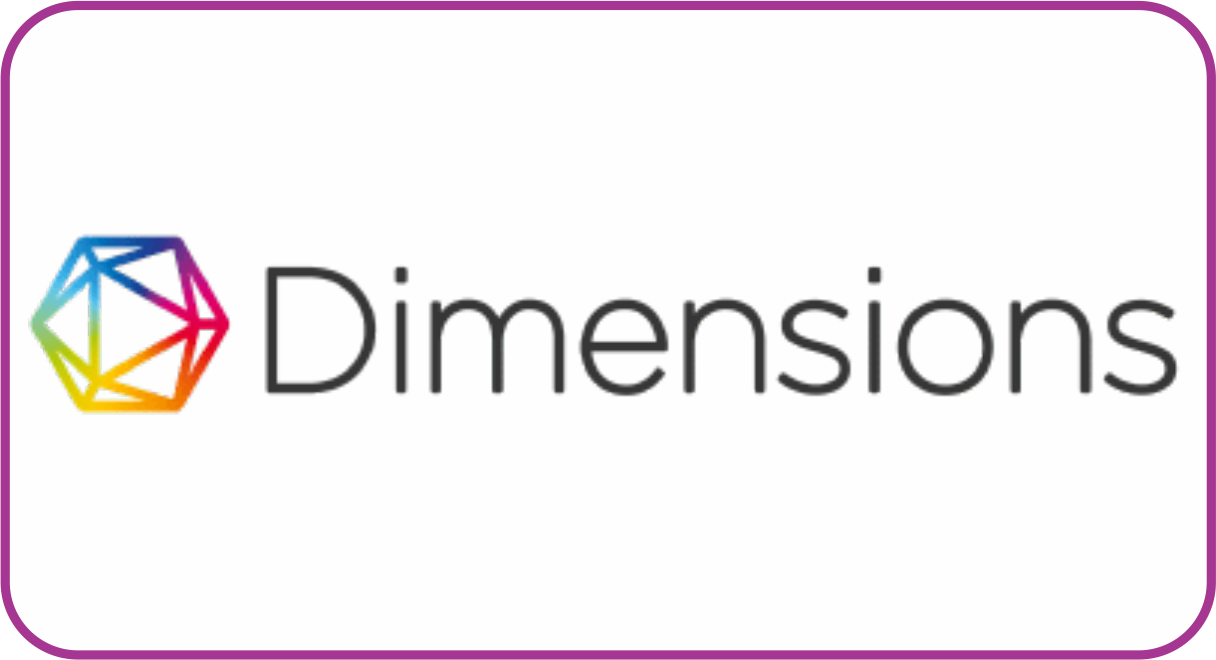Phonological Disorder in Speaking Among Stroke Patients: A Neurolinguistics Study
DOI:
https://doi.org/10.30983/mj.v4i2.8891Keywords:
Broca's area, Wernicke's area,, phonological disorders,, neurolinguistics, , stroke., broca's area, wernicke's area, phonological disorders, neurolinguistics, stroke.Abstract
The objective of this research is to identify the types of phonological disorders in Indonesian-speaking stroke patients and to determine the disturbed dominant hemisphere based on the structure of these phonological disorders. The data are obtained from the utterances of stroke patients who experience difficulty in producing speech. Data are collected using the listening method related to language disorders in stroke patients with basic recording techniques, followed by the technique of free listening without speech involvement. Data analysis uses the matching method, with the basic technique being the KES (Key Element Segregation) technique, which involves categorizing phonological disorders such as addition, omission, substitution, or metathesis in vowel and consonant sounds. Additionally, the dominant disturbance in either Broca's or Wernicke's areas, as viewed through the phonological disorders, is identified. The results show that phonological disorders occur more frequently in consonant sounds (54.66%) compared to vowel sounds (45.33%) in stroke patients. Sound omission and substitution are the two most common types of disturbances observed. The analysis also suggests that phonological disorders in most stroke patients are related to disturbances in the dominant hemisphere, particularly in Broca's area, which controls speech sound production. However, there is one case (Patient V) that indicates a disturbance in the language comprehension area, Wernicke's area
Abstrak
Penelitian ini bertujuan untuk mengidentifikasi tipe-tipe gangguan fonologis yang terjadi pada penderita stroke dalam berbahasa Indonesia dan menentukan hemisfer dominan yang terganggu berdasarkan susunan gangguan fonologis tersebut. Metode yang digunakan adalah deskriptif kualitatif dengan pendekatan neurolinguistik. Data diambil dari ujaran penderita stroke yang mengalami kesulitan dalam memproduksi ujaran. Teknik pengumpulan data menggunakan metode simak dengan teknik dasar rekam dan dilanjutkan dengan teknik simak bebas libat cakap. Metode dan teknik analisis data menggunakan metode padan, teknik dasarnya adalah teknik pilah unsur penentu (PUP) yaitu dengan memilah-milah gangguan fonologis yang meliputi adisi, omisi, substitusi atau metatesis pada bunyi vokal dan konsonan. Begitu juga dengan memilah-milah hemisfer dominan area Broca atau Wernicke yang terganggu dilihat dari gangguan fonologis yang terjadi. Hasil penelitian menunjukkan bahwa gangguan fonologis lebih sering terjadi pada bunyi konsonan (54,66%) dibandingkan bunyi vokal (45,33%) di antara penderita stroke. Omisi dan substitusi bunyi merupakan dua jenis gangguan yang paling sering terjadi pada ujaran penderita stroke. Analisis juga menunjukkan bahwa gangguan fonologis pada sebagian besar penderita stroke terkait dengan gangguan pada hemisfer dominan, khususnya area Broca, yang mengendalikan produksi bunyi ujaran. Namun, terdapat satu kasus yang menunjukkan gangguan pada area pemahaman bahasa, yaitu area Wernicke pada penderita stroke V.
Kata Kunci: area broca, area wernicke, gangguan fonologis, neurolinguistik, stroke.
References
American Speech-Language-Hearing Association. (2020). Phonological Disorders. Retrieved from https://www.asha.org/public/speech/disorders/Phonological-Disorders/
Blumstein, S. E. (1995). The neurobiology of the sound structure of language. In M. Gazzaniga (Ed.), The Cognitive Neurosciences (pp. 915-929). Cambridge, MA: MIT Press
Blumstein, S. E. (1994). Impairments of Speech Production and Speech Perception in Aphasia. Philosophical Transactions of the Royal Society B: Biological Sciences, 346(1315), 29–36. doi:10.1098/rstb.1994.0125
Brown, H. Douglas. Prinsip Pembelajaran dan Pengajaran Bahasa. Jakarta: Pearson Education. 2008.
Cyril Perret, Laurence Schneider, Géraldine Dayer & Marina Laganaro (2014) Convergences and divergences between neurolinguistic and psycholinguistic data in the study of phonological and phonetic encoding: a parallel investigation of syllable frequency effects in brain-damaged and healthy speakers, Language, Cognition and Neuroscience, 29:6, 714-727, DOI: 10.1080/01690965.2012.678368
Fadhilasari, icha. (2016). DEVIASI LINGUISTIS PADA TUTURAN PENDERITA AFASIA BROCA AKIBAT STROKE. Buana Bastra, 3(1), 31–48.
Fadhilasari, i. (2022). GANGGUAN BERBAHASA TATARAN FONOLOGIS PADA TUTURAN PENDERITA STROKE ISKEMIK: KAJIAN PSIKOLINGUISTIK. Fon: Jurnal
Flowers, H. L., & Skoretz, S. A. (2014). Phonological therapy for acquired phonological disorders: Evaluation of an intervention program. American Journal of Speech-Language Pathology, 23(4), 499-511.
Gazzaniga, M. S., Ivry, R. B., & Mangun, G. R. (2018). "Cognitive Neuroscience: The Biology of the Mind." New York, NY: W.W. Norton & Company.
Gustianingsih. (2014). Indonesian Phonological Disorder of Autistic Spectrum Disorder in Medan City (Case of 7-10 Years old). Results of Competitive Grant Research.
Gustianingsih. (2015). Fonology Disorder in Adult Autistic Spectrum Disorder of Sekolah Alam Medan. IOJR International Journals of Scientific Research INDIA
Gustianingsih & Ali, & Effendy, Elmeida. (2020). Autistic Spectrum Disorder in Producing Words of Indonesia’s Adult Patient
Hickok, G., & Poeppel, D. (2019) "The Cortical Organization of Speech Processing, Annual Review of Neuroscience
Indah, R. N. (2017). Gangguan berbahasa: Kajian pengantar.
Johan, M., & Susanto, A. (2018). Gangguan Berbahasa Pada Penderita Strok Suatu Kajian: Neurolinguistik. Seminar Nasional Ilmu Sosial Dan Teknologi (1), 103–108. Retrieved from https://ejournal.upbatam.ac.id/index. php/ prosiding/article/view/752
Jones, A., Smith, B., & Johnson, C. (2019). The Impact of Stroke on Phonological Processing. Journal of Neurolinguistics, 32(4), 78-94.
Laksmidewi, A. A. A. P. (2018). Gangguan Otak Yang Terkait Dengan Komunikasi. Retrieved from http://erepo.unud.ac.id/id/eprint/23381/1/5cf6076ae388b5c3569b3bc164bbc39d.pdf
Murdoch, B. E. (2010). Acquired Speech and Language Disorders: A Neuroanatomical and Functional Neurological Approach. John Wiley & Sons.
Nabila, H. (2019). Gangguan Fonologi Afasia Pada Penderita Stroke Suatu Kajian: Psikolinguistik. Seminar Nasional Literasi IV: “Menjawab Tantangan Pendidikan Melalui Literasi Budaya Pada Era Disrupsi,” 112–122. Retrieved from http://conference.upgris.ac.id/index.p hp/snl/article/ view/784
Perret, Cyril & Schneider, Laurence & Dayer, Géraldine & Laganaro, Marina. (2012). Convergences and divergences between neurolinguistic and psycholinguistic data in the study of phonological and phonetic encoding: A parallel investigation of syllable frequency effects in brain-damaged and healthy speakers. Language and Cognitive Processes - LANG COGNITIVE PROCESS. 29. 1-20.10.1080/01690965.2012.678368.
Rachmawati, R. S. (2012). Gangguan Fonologis dalam Komunikasi: Studi Kasus dan Terapi. Jakarta: Penerbit Universitas Indonesia
Rahmadani, F. N. (2018). Gangguan Fonologi Pada Penyandang Pascastroke Sindrom Afasia: Kajian Neurolinguistik (Universitas Negeri Jakarta). Retrieved from http://repository.unj.ac.id/1194/1/Skripsi Febriyanti Nur Rahmadani.pdf
Robson, H., Rothermich, K., Deger, K., Robson, K., & Brettschneider, J. (2012). Phonological deficits in the production of German words in Alzheimer’s disease and aphasia. Aphasiology, 26(6), 753-768.
Soedjito, L. M. (2015). Aspek Fonologis dalam Gangguan Bicara. Yogyakarta: Penerbit Gadjah Mada University Press.
You, Y., Kim, S., Kim, M., Lee, S., Lee, S., Lee, M., & Park, J. (2018). Neural mechanisms underlying phonemic paraphasia in stroke patients: A preliminary study using functional magnetic resonance imaging. Journal of Clinical Neurology, 14(3), 326-333. doi: 10.3988/jcn.2018.14.3.326
Downloads
Submitted
Accepted
Published
Issue
Section
License
Copyright (c) 2025 Raees N Bibi, Gustianingsih, Alemina Br. Perangin-angin

This work is licensed under a Creative Commons Attribution-ShareAlike 4.0 International License.
Authors who publish with this journal agree to the following terms:
- Authors retain copyright and grant the journal right of first publication with the work simultaneously licensed under a Creative Commons Attribution License that allows others to share the work with an acknowledgment of the work's authorship and initial publication in this journal.
- Authors are able to enter into separate, additional contractual arrangements for the non-exclusive distribution of the journal's published version of the work (e.g., post it to an institutional repository or publish it in a book), with an acknowledgment of its initial publication in this journal.
- Authors are permitted and encouraged to post their work online (e.g., in institutional repositories or on their website) prior to and during the submission process, as it can lead to productive exchanges, as well as earlier and greater citation of published work (See The Effect of Open Access).









